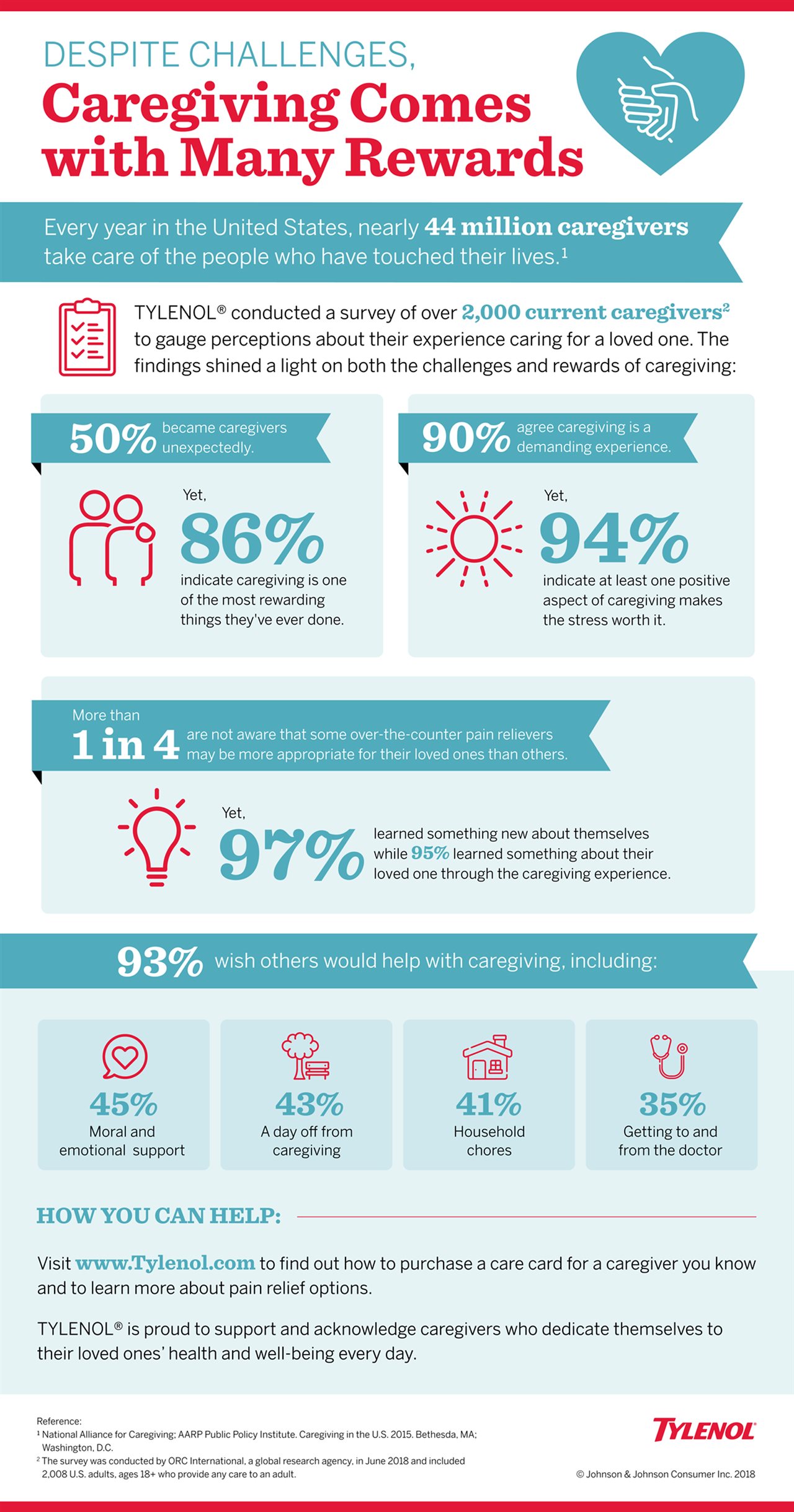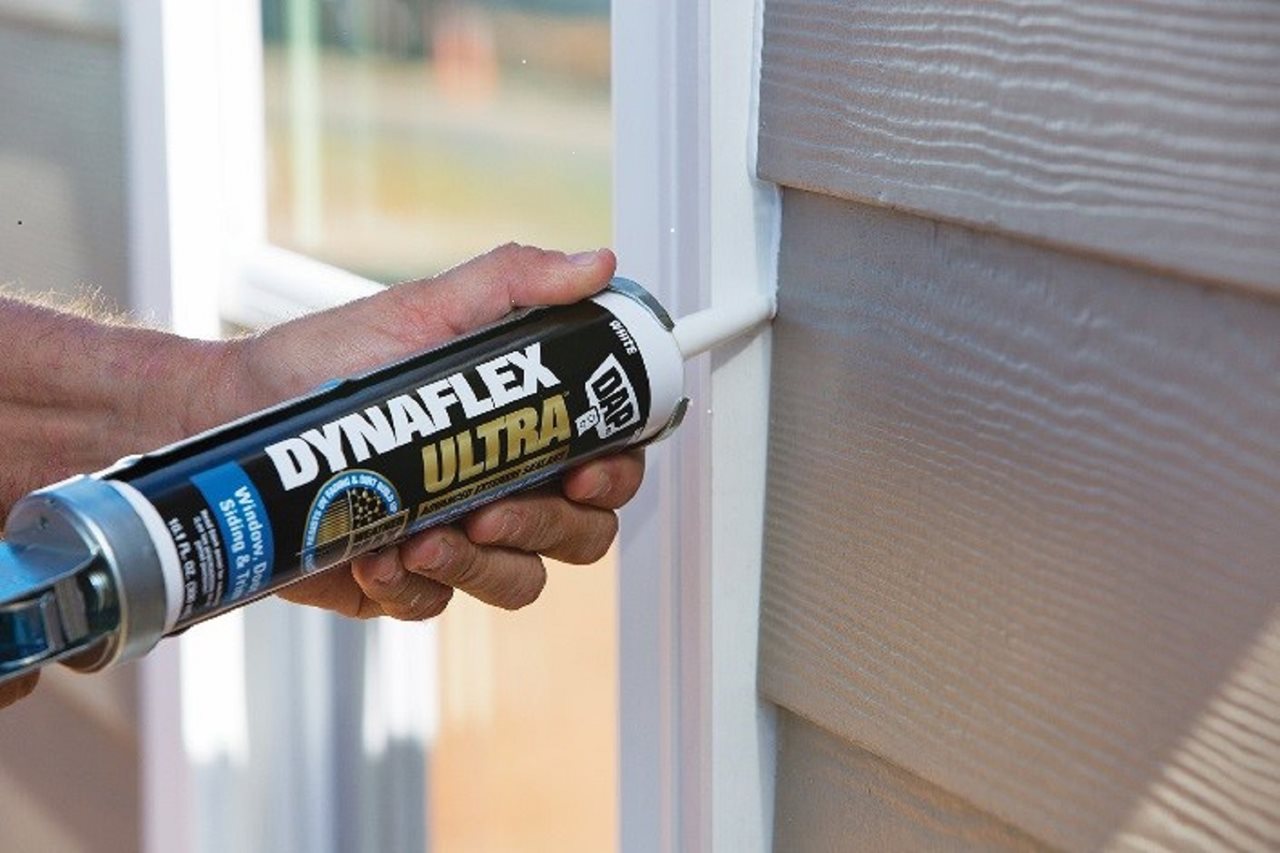2018-10-31T08:01:00
(BPT) – –

2018-10-31T11:01:00
(BPT) – A generation ago, Americans were savers. When the Greatest Generation and Boomers needed to make a major purchase or wanted to take a trip, they put money aside. And then they saved some more. Putting money aside each week or month was an ingrained habit, perhaps as an outgrowth of people living through the Depression and World War II.
But today, half of Americans do not automatically put money into their savings accounts with each paycheck. This is a routine that creates incremental gains every few weeks.
According to a recent PurePoint Financial survey almost half of Americans today don’t quite get the concept of saving for the short term. People are putting money into their employer-matched 401(k) plans for retirement, but they’re not setting savings goals for the next one to five years.
That’s a mistake, says Pierre P. Habis, president of PurePoint.
“People don’t realize that not saving actually costs them money,” Habis says. “They’re leaving money on the table by not doing one simple thing: Maximizing their money by moving it from a checking account or traditional savings account to a high-yield savings account.”
Somehow Americans’ money mindset shifted, and the instant gratification that comes with purchasing what we want, when we want it, has erased the concept of saving for a purchase.
Millennials in particular are frequently derailed from their short-term savings goals by impulse. The PurePoint survey found that compared to the Boomer generation, millennials are three times more likely to have their short-term savings derailed by an impulse trip or vacation because their friends were going; and equally three times more likely to buy something on impulse because of an online or social media ad.
Other findings include:
* 65 percent of Americans do not know they’re missing out on free money by not having a savings account, and don’t understand how interest rates can impact their savings.
* 4 in 10 Americans believe their checking account and savings account have the same interest rates.
* One-third of Americans prefer debt and instant gratification purchases to saving.
* More than half of Americans let money sit in a checking account without transferring it to a savings account, where they can be earning interest.
How much money are people losing by not earning interest in a high-yield savings account? The numbers are startling.
According to some number-crunching by NerdWallet by CNBC, if you put $10,000 in your checking account, at the end of three years, you’ll have that same $10,000. A traditional, low-yield savings account will give you about three extra dollars. But a high-yield savings account will give you $10,475. Now you’re talking about some real money, and it only goes up from there. Leave that $10,000 in the account for five years, and you’ll have $10,805. And that’s at an interest rate of 1.55 percent. Non-traditional banks like PurePoint offer higher yields, reaching more than 2 percent. That’s a good chunk of change.
“A good first step is to check your APY, which according to our research more than half of Americans don’t know,” Habis says. “If you’re not earning at least one percent, you’re doing yourself a disservice.”
Put that money in a CD, and you’ll earn even more. Now, your money is working for you, not against you, like debt, inflation and credit card interest rates.
The solution? The old-fashioned notion of saving for a rainy day has been streamlined by ultra-modern financial technology. Online financial institutions like PurePoint, which is a hybrid digital bank with brick-and-mortar financial centers, are offering more competitive interest rates for high-yield savings and CD accounts than traditional banks, nearing the 2 percent mark. It’s an alternative to investing that you can trust with a knowable, controlled return over the short or long-term. It’s almost like investing in the stock market, but with a controlled and knowable return.
For more information about how you can make your money work for you, visit PurePoint at www.purepoint.com and try their rate comparison tool.

2018-10-31T08:01:00
(BPT) – It’s hard not to dread the holidays if you’re trying to maintain a healthy diet. Heavy meals packed with carbs and creams are often followed by sugary treats — leaving you ready to crash in a house full of guests. On the other hand, munching on a simple salad while loved ones dig into each delicious holiday dish leaves you feeling unsatisfied and your mouth watering.
Fortunately, you don’t have to give up your favorite traditional dishes to stay healthy and energized this holiday season. Avoid the post-holiday slump by trying these tasty — and nutritious — holiday twists.
1. Try low-fat cottage cheese to cook creamier lasagna
Lasagna is a great meal to plan for the holidays because you can assemble all of the ingredients days before you have to host. When guests arrive, simply take the pan out of the freezer, put it in the oven and enjoy catching up with your loved ones! To make this convenient and tasty lasagna healthier, swap out the ricotta for cottage cheese. Muuna’s Lowfat Plain Cottage Cheese is uniquely rich and creamy yet has less fat and more protein than lowfat ricotta cheese. Plus, the creamier taste will have everyone asking for seconds!
2. Use chicken or vegetable stock for a low-fat gravy alternative
Gravy is traditionally made using fat drippings from turkey, and while delicious, this style of gravy is high in cholesterol and fat. A much healthier option is to use chicken or vegetable stock to make your gravy instead. Add whole-wheat flour to thicken the stock and spices for taste.
3. Swap out your traditional mashed potatoes for butternut squash
Add more nutrients and color to your holiday spread with a comforting mashed butternut squash. Butternut squash is a slightly lower-carb option and is a good source of vitamin C and E. Be sure to top your mashed squash with a touch of cinnamon for extra holiday spice!
4. Replace morning baked treats with the perfect grab-and-go breakfast
Skip the coffee cake and cinnamon rolls and wake up to a protein-packed breakfast to fuel your morning: creamy Muuna cottage cheese with real pieces of fruit in single-serve cups. Packed with 15 grams of protein, only 9 g sugar and 130 calories in nine craveable flavors including strawberry, black cherry and mango, it’s a great way to start your day.
5. Sauté a delicious alternative to green bean casserole
You don’t have to dress your green beans with cream of mushroom soup and cheese to enjoy these veggies as a holiday side dish. Instead, sauté your green beans to maintain their crisp texture and add garlic and lemon zest for flavor. Top the green beans with shaved almonds and breadcrumbs for a crunchy twist!
6. Try this lighter and creamier cheesecake
Even the holiday’s most decadent desserts can be upgraded with a healthy twist simply by using cottage cheese instead of cream cheese. This simple swap significantly reduces fat. Try Muuna’s creamy Cranberry Cottage Cheesecake recipe below to lighten this sweet treat and enjoy a healthier holiday season. Each slice has a whopping 13 grams of protein!
Muuna’s Cranberry Cottage Cheesecake
Ingredients:
Cranberry Compote Ingredients:
1 bag fresh cranberries
1/2 cup sugar
3 tablespoons water
Crust Ingredients:
2 sleeves graham crackers
1/4 cup sugar
6 tablespoons butter, melted
1 teaspoon pumpkin pie spice
Cheesecake Filling Ingredients:
1 – 16 oz. container Classic Plain Muuna cottage cheese
1 cup vanilla bean Greek yogurt
1/4 cup maple syrup
2 teaspoons flour
2 eggs
1 teaspoon vanilla extract
Instructions:
Cranberry Compote:
1. In a small saucepan mix everything together. Bring to a boil and then turn to low. Allow to simmer for 10-15 minutes, stirring frequently. 2. Remove from the heat and allow to cool.
Crust:
1. Place the graham crackers into your food processor. Pulse until you have small crumbs. 2. Melt the butter in a small saucepan. 3. In a large bowl mix together the crumbs, melted butter, sugar and pumpkin pie spice. 4. Spray a glass pie plate with cooking spray. 5. Press the crust mixture into the pie pan.
Cheesecake Filling:
1. Preheat the oven to 350° F. 2. In a blender, blend together the cottage cheese and Greek yogurt until it is smooth. 3. In a small bowl, mix together the eggs, flour, maple syrup and vanilla extract. 4. Empty the contents of the blender into a larger bowl and then add the mixture from the smaller bowl. 5. Fold everything together. 6. Pour the cheesecake filling into the pie pan. 7. Bake for one hour or until the cheesecake is set. 8. Allow to fully cool before topping with the cranberry compote. 9. Chill in the refrigerator before serving!
Nutrition Facts
Recipe makes: 8 servings; Calories: 327; Protein: 13 g; Carbohydrates: 42 g; Fat: 14 g; Fiber: 5 g
(Image Courtesy of Jessica Weinberg)

2018-10-30T14:37:00
(BPT) – The experiences of stroke survivors are threaded with distressing themes, such as slurred speech, sudden weakness or numbness on one side of the body, and fear at the rapid onset of symptoms. For many, the journey toward recovery involves overcoming daunting physical and emotional challenges, including learning to talk and walk again and a constant fear of another episode.
Since 2009, patient organizations, companies and individuals have observed World Stroke Day, a global effort to raise awareness of stroke and build commitment to reducing the financial and physical burden associated with this life-changing event. This initiative is increasingly important – in the United States, someone has a stroke every 40 seconds.1 In fact, more people are at risk for strokes today than was true just a generation ago.2
“Amgen is proud to work to better understand the risk factors for stroke and educate the public on the warning signs of this potentially devastating condition,” said Paul R. Eisenberg, Senior Vice President, U.S. Medical at Amgen. “Many people do not understand the underlying causes of stroke and the measures they can take to help prevent stroke in themselves or a loved one.”
Defined as a sudden interruption in the blood supply of the brain, most strokes are caused by a blockage of arteries leading to the brain (ischemic stroke). Strokes occur rapidly and require immediate treatment. However, approximately 80 percent of strokes are preventable through better education and steps that can be taken to control the underlying causes.3 Major causes include high blood pressure and high low-density lipoprotein cholesterol (LDL-C or “bad cholesterol”).4
High LDL-C increases the risk of atherosclerosis, a buildup of plaque on the walls of the arteries, which can restrict the flow of blood to the brain. Studies have clearly established that lowering LDL-C levels can lower the risk of cardiovascular events, including stroke.4 Many accomplish this through lifestyle behavior modifications, such as diet and exercise, and/or prescription medications, such as statins. For others, these approaches are not enough, leading to elevated LDL-C levels and increased risk of stroke.
Recently, Repatha® (evolocumab) has given people with heart disease, at high-risk for cardiovascular disease who are unable to achieve lower LDL-C through diet, exercise and statin therapy, as another treatment option. When added to statin treatment, Repatha dramatically lowers LDL-C by blocking an enzyme called PCSK9, whose function is to prevent the liver from clearing bad cholesterol from the blood.5
The Food and Drug Administration (FDA) approved Repatha® as the first and only PCSK9 inhibitor to prevent heart attacks and strokes, and to prevent the necessity for a stent or open-heart bypass surgery in patients with established cardiovascular disease.5 The most common side effects of Repatha® include: runny nose, sore throat, symptoms of the common cold, flu or flu-like symptoms, back pain, high blood sugar levels (diabetes) and redness, pain, or bruising at the injection site.
“Strokes are irrevocably life-changing, and it’s important that people know their risk and take action,” Eisenberg said. “We hope World Stroke Day reminds people to talk to their doctor about managing cholesterol. When diet and exercise are not enough, there are prescription medicines that may help to reduce the risk of stroke.”
World Stroke Day is an initiative of the World Stroke Organization. This year’s observance will focus on raising awareness of key issues and the needs of stroke survivors and caregivers.
Do not use Repatha® if you are allergic to evolocumab or to any of the ingredients in Repatha.
Before you start using Repatha®, tell your healthcare provider about all your medical conditions, including if you are allergic to rubber or latex, are pregnant or plan to become pregnant, or are breastfeeding or plan to breastfeed. The needle covers on the single-use prefilled syringes and the inside of the needle caps on the single-use prefilled SureClick® autoinjectors contain dry natural rubber. The single-use Pushtronex® system (on-body infusor with prefilled cartridge) is not made with natural rubber latex.
Tell your healthcare provider or pharmacist about any prescription and over-the-counter medicines, vitamins, or herbal supplements you take.
What are the possible side effects of Repatha®?
Repatha® can cause serious side effects including, serious allergic reactions. Stop taking Repatha® and call your healthcare provider or seek emergency help right away if you have any of these symptoms: trouble breathing or swallowing, raised bumps (hives), rash or itching, swelling of the face, lips, tongue, throat or arms.
The most common side effects of Repatha® include: runny nose, sore throat, symptoms of the common cold, flu or flu-like symptoms, back pain, high blood sugar levels (diabetes) and redness, pain, or bruising at the injection site.
Tell your healthcare provider if you have any side effect that bothers you or that does not go away.
These are not all the possible side effects of Repatha®. Ask your healthcare provider or pharmacist for more information. Call your healthcare provider for medical advice about side effects.
You are encouraged to report negative side effects of prescription drugs to the FDA. Visit www.fda.gov/medwatch, or call 1–800–FDA–1088.
Approved Use Repatha® is an injectable prescription medicine used:
Please see full Prescribing Information and Patient Product Information.
1 AHA. Heart Disease and Stroke Statistics, 2017. Available at: https://healthmetrics.heart.org/wp-content/uploads/2017/06/Heart-Disease-and-Stroke-Statistics-2017-ucm_491265.pdf. Accessed November 9, 2017.
2 Brown AF, Liang LJ, Vassar SD, et al. Annals of Internal Medicine. Trends in Racial/Ethnic and Nativity Disparities in Cardiovascular Health Among Adults Without Prevalent Cardiovascular Disease in the United States, 1988 to 2014. 2018.
3 Centers for Disease Control. Preventing Stroke Deaths. Available at: https://www.cdc.gov/vitalsigns/stroke/. Accessed April 10, 2018.
4 American Heart Association. About Cholesterol. Available at: http://www.heart.org/HEARTORG/Conditions/Cholesterol/AboutCholesterol/About- Cholesterol_UCM_001220_Article.jsp#.Ws4mMi7wapp. Accessed April 10, 2018.
5 Repatha® (evolocumab) Prescribing Information. Amgen.
2018-10-30T17:41:00
(BPT) – As one of Mexico’s top artisanal hubs, Guadalajara offers culture, cuisine and shopping. Travelers can find everything from expertly crafted pottery to luxe leather goods in markets throughout the city. For those who travel the world in search of the best locally produced, stylish souvenirs, Guadalajara provides a vibrant, festive atmosphere — after all, this is the birthplace of mariachi, tequila and charrería, the Mexican rodeo!
Follow these tips for shopping, eating and playing like a local in Guadalajara, and you are sure to leave with as many memories as one-of-a-kind purchases.
Largest indoor market in Latin America
Visitors to the historic center of Guadalajara will enjoy sightseeing with a backdrop of the architecture of the double-spired Guadalajara Cathedral. This area is home to Mercado Libertad, the largest indoor market in Latin America with three floors and nearly 3,000 stands featuring everything from apparel and handbags to fresh produce and local delicacies. Mexican cowboys, known locally as charros, frequent leather vendors in search of saddles, boots and belts. Across the street in the jewelry market, gold and silver pieces will add just the right Mexican accent to your wardrobe.
The perfect pair
Whether it is pumps or loafers, sandals or sneakers you seek, Guadalajara is the place to find the perfect pair of shoes. Make a beeline to Galería del Calzado, a shopping center focused exclusively on your feet. Choose from 64 stores offering everything from high fashion designs to the hottest streetwear trends.
Galleries galore
In the colonial town of Tlaquepaque, local arts and crafts fill market showrooms and upscale stores where you will find carved wooden furniture, colorful blown glass ceramics and hand-stitched clothing. The downtown area retains the traditional structure of a small Mexican community with a parish street, central market, main square and many pedestrian-only streets, making this a good place to take a stroll. Catch the daily mariachi performances at the local restaurants and cantinas, some with outdoor seating perfect for people watching.
Bargain hunting
Some of the best bargains can be found among Tonalá’s narrow streets, where most of Guadalajara’s local goods can be purchased. In this neighborhood, you can find some of the best crafts in the country. This includes wide-mouth clay bowls designed to serve a cazuela cocktail, Guadalajara’s signature citrus punch. The area is particularly known for silver and gold crafts, hand-painted pottery, papier-mâché and clay figurines. On Thursdays and Sundays, bargain merchandise is sold at a vast street market where wholesalers arrive from all over the country to buy in bulk.
Lap of luxury
In the district of Zapopan, the Andares Mall offers shoppers top-of-the-line luxury brands. After a day of shopping, join the locals as they enjoy a pedestrian corridor filled with high-end restaurants and bars near the basilica.
Nature’s products
Just outside of Guadalajara are sprawling agave fields, a UNESCO World Heritage Site where the world’s tequila is produced. Drive past fields of the blue agave plant that stretch out over the rugged, hilly terrain, en route to the town of Tequila. After visiting the distilleries and purchasing bottles to serve back home, peruse smaller shops and stalls for necklaces and earrings crafted using blue agave leaves, agave syrup and figurines made from the obsidian of the nearby volcano.
For more information, see www.visitguadalajara.com.

2018-10-30T15:45:00
(BPT) – Your cable bill, entertainment expenses and travel extras — these often top the list when families sit down to discuss where they can save money.
One expense you should add to your list this year is healthcare costs. Because autumn marks the beginning of the annual open enrollment period for employees, now is the ideal time to sign up for a new health benefit plan or adjust your current plan. Flexible Spending Accounts (FSAs) and Health Savings Accounts (HSAs) are two options for you to consider if you’re looking to save money in the new year. But, how do they work?
Both FSAs and HSAs are tax advantaged accounts, allowing individuals to set aside money, tax-free, to pay for eligible healthcare expenses such as co-pays, coinsurance deductibles, prescriptions, etc. However, there are several key differences between the two.
An FSA, which can only be provided by your employer, generally does not have any eligibility requirement and allows you to set aside up to $2,700 (contribution limit for 2019) in the account — most of which must be used within the plan year. An HSA — which you can obtain on your own or through your employer — requires that you have a qualified high deductible health plan (HDHP). Contribution to HSAs are limited to $3,500 for individuals with self-only HDHP coverage and $7,000 for individuals with family HDHP coverage, and the money can be used to cover medical expenses throughout your lifetime. With all FSAs and employer-linked HSAs, a portion of your paycheck can be set aside for deposit into your FSA or HSA account automatically pre-tax, saving you money in the long run. Plus, your employer may also contribute funds to your HSA.
Signing up for an FSA or HSA is a convenient way to ease your spending when your healthcare plan doesn’t cover certain expenses, such as over-the-counter prescriptions, travel vaccines and diagnostic tests. In fact, 48 percent of FSA users said they would be likely to cut back on medicines and treatments if they didn’t have an FSA, according to a 2018 Flexible Spending Account and Health Savings Account Consumer Research study commissioned by Visa and conducted by Kelton Global. According to the study, 89 percent of FSA users agree that saving money through pre-tax contributions tops their list of reasons for having an FSA.
In addition to financial benefits, there are emotional benefits to having an FSA. Seventy-nine percent of FSA users said their account helps them take control of their medical expenses and an equal number said it makes them feel confident they can pay for a medical emergency.
One of the most convenient ways to access funds in an HSA or FSA is with a Visa Healthcare Card. It allows employees to easily access and use the funds in their HSA or FSA to pay for qualified medical expenses wherever Visa debit cards are accepted, making it easy to pay for expenses such as:
* Co-pays and deductibles
* Prescriptions
* Dentist visits: Cleanings, orthodontia, dentures
* Exams: Physicals, dermatologist
* Vision care, including exams, new glasses, LASIK
* Hearing exams and aids
* Medical equipment such as blood pressure monitors, thermometers
* Smoking cessation programs
For added convenience, most pharmacies, grocery stores and other retailers that sell healthcare products have the capability to distinguish between covered items and non-covered items when you pay for them using a Visa Healthcare Card, so you don’t have to wonder whether something is covered.
By using a Visa Healthcare Card at these locations, you no longer have to pay out-of-pocket and then submit receipts to be reimbursed for your medical expenses, saving you time and paperwork!
There’s a reason why 64 percent of FSA users prefer to access their funds with their FSA card, and 74 percent of users without a debit card are interested in one. Likewise, 60 percent of HSA debit card owners cite “easy to use” as their top reason to like their HSA debit card and 86 percent would recommend an HSA to others. As you review your options this open enrollment season, ask your employer if they offer an HSA or FSA with a Visa Healthcare Card to provide easy access to your funds. To learn more, visit www.visahealthcare.com.

2018-10-30T11:01:00
(BPT) – When you go to the doctor for a physical, you’ll probably have a variety of tests done to check for health concerns like blood pressure and cholesterol. One important test you should consider requesting is for hepatitis C. Why? A simple blood test now could save your life and potentially the lives of others.
What is hepatitis C?
Hepatitis C (hep C) is the most common chronic blood-borne infection in the United States with an estimated 3.5 million people living with the disease, according to the U.S. Department of Health and Human Services. Hep C affects the liver and is caused by the hep C virus. Left untreated, a hep C infection can attack and kill cells in the liver.
Hep C is typically spread when a person is exposed to an infected person’s blood. This could be from something as simple as sharing a razor or toothbrush. Keep in mind, hep C is not spread through food or water, or by sitting on toilet seats.
Data suggest that veterans are at a higher risk for hep C exposure. In fact, one out of every 20 veterans enrolled in the Veterans Health Administration has hep C — more than three times the infection rate of the general U.S. population, according to the U.S. Department of Veterans Affairs (VA).
The American Legion, the nation’s largest wartime veterans service organization, has joined forces with AbbVie, a global biopharmaceutical company, to increase awareness of hep C and provide free antibody testing for veterans and their communities. Visit legion.org/hepC to learn about the disease and get information about free testing.
Hep C symptoms and tests
Some common symptoms of hep C include fever, fatigue, loss of appetite, nausea, vomiting, jaundice, abdominal pain, joint pain, dark urine and gray-colored stools. However, the majority of people with hep C do not have any symptoms and unless they are tested, do not know they are carrying the virus. This is why it’s important to request the test proactively.
The VA has treated more patients for hep C than any major health care system in the U.S. Approximately 357 veterans are started on treatment every week. Getting tested for hep C is important for all veterans, but there are other people who are at a higher risk for exposure that should also be tested. The Centers for Disease Control and Prevention (CDC) recommends hep C testing for:
* Everyone born from 1945 to 1965
* Anyone who received clotting factor concentrates made before 1987
* Recipients of blood transfusions or solid organ transplants prior to July 1992
* Long-term hemodialysis patients
* People with known exposures to the hep C virus, such as health care workers or public safety workers, after needle sticks involving blood from someone infected with the hep C virus
* Current or former injection drug users, including those who injected only once many years ago
* People with HIV infection
* Children born to mothers with hep C
Hep C can be treated
After getting tested, if you learn you are positive for hep C you have treatment options. Hep C is a curable disease, meaning for some people the hep C virus is not detectable in the blood three months after treatment ends. Talk with your doctor about the best treatments for you and steps you can take to prevent the spread of the virus.
Being diagnosed with hep C is life-changing, but it’s also empowering. With this important information you can now take control of your future and choose the right treatment so you can live a long, full life.

2018-10-30T08:49:00
(BPT) – As the holidays approach, you probably want to clean out your fridge to make room for all the goodies you’ll be cooking for family and friends. While you’re digging through the expired and forgotten, it’s also a smart time to look at what’s in your fridge and think about how that’s impacting your health.
Registered dietitian Melissa Rifkin says by thoughtfully organizing your fridge with useful, nutrient-dense food items, you’ll not only enjoy a cleaner appliance, but cleaner eating. She offers some smart tips for simple swaps you can make today.
Use salsa and fresh citrus juice in place of salad dressings: Fresh salsa and citrus juice provide loads of flavor and micronutrients yet have a small amount of calories compared to traditional salad dressings. Fresh herbs and seasonings are also low-calorie alternatives for adding flavor to foods.
Place produce on shelves, not in drawers: Many people put produce in the crisper drawer, but that pushes them out of sight and out of mind. Instead, reorganize to keep produce on shelves and store other foods, like cheese, meat and dry goods, in the drawers.
Use cottage cheese in place of yogurt and sour cream: Many creamy dips, like French onion, call for a base of sour cream or yogurt. Replace these less nutrient-dense ingredients with high-protein, creamy Muuna cottage cheese for a smooth texture and tangy flavor while increasing nutritional value with potassium and probiotics.
Try applesauce or pureed pumpkin in place of oil: When baking holiday treats, swap out the oil for pureed pumpkin or applesauce. This is a great way to maintain moisture while reducing fat grams and calories, plus it increases micronutrients from the produce.
Savor portobello mushrooms instead of hamburger buns: Portobello mushrooms are a low-carb swap for a hamburger bun that is hearty, dense and high in vitamin D. Try grilling large mushroom caps and use them on both sides of your burger patty.
Make a wrap using lettuce instead of tortillas: Using lettuce for a wrap creates a lower-carb meal while increasing veggie intake. Load your favorite wrap ingredients onto large, overlapping lettuce leaves, roll up and enjoy.
Snack on cottage cheese instead of yogurt: Look at a typical yogurt label and you’ll be surprised by the amount of added sugar and little protein. Swap for Muuna cottage cheese that is creamier than the average cottage cheese and contains healthy probiotics with more protein and less sugar, available in nine fruit-on-the-bottom flavors including strawberry, blueberry and peach.
Add jicama for crunch on your salad: Jicama is a crisp, widely available vegetable that is a great substitute for the higher calorie, low-quality crunchy ingredients on your salad. For example, swap out croutons and tortilla strips for slices of jicama.
Limit condiments and replace with flavor-enhancers: Sauces and condiments add flavor to meals, but are often adding sugar, salt and preservatives as well. Stock your fridge with flavor-enhancing items that have few ingredients, like mustard, no sugar-added ketchup and pico de gallo.
Swap calorie-dense protein options for filling, lean proteins: Keep your fridge and freezer stocked with healthy protein options, like fish, chicken, turkey and even lean beef. What’s more, have ready-to-go protein, like creamy Muuna cottage cheese, on hand and add a scoop to pasta dishes, load it onto a baked sweet potato, or use it on a large dinner salad for a quick and lean protein addition, plus the added benefits of calcium, potassium and probiotics.
Whether you use one or all of these suggestions, you’re sure to transform your fridge to focus on healthier eating, this holiday season and beyond.

2018-10-29T14:31:01
(BPT) – That chill in the air means one thing: It’s time to winterize your home. Taking a few simple steps now to repair and protect your home from Mother Nature can help save on time, energy bills and costly repairs this season. Here are 10 easy-to-accomplish projects to tackle before winter really sets in.
1. Seal windows and doors.

Small cracks and gaps between window frames and doors allow water, insects and cold air to creep inside. Protect and keep your home warm by replacing worn exterior caulk with new sealant, like DAP® Dynaflex Ultra™ Advanced Exterior Sealant. Backed by a Lifetime Mold, Mildew and Algae Resistance Guarantee, Dynaflex Ultra utilizes DAP’s exclusive WeatherMax Technology™ for all-weather, waterproof protection that won’t crack, crumble or discolor over time.
2. Fill large gaps.

Gaps and spaces larger than one inch wide — such as a large hole or areas like plumbing stacks, siding edges or floor-wall junctions — should be filled to block drafts and unwanted pests. Try a foam filler, like DAP® MaxFill™ Triple Expanding Sealant, that provides three times the expansion for an airtight seal.
3. Protect against pests.

To avoid issues with rodents and other pests trying to stay warm this season, use DAP® Mouse Shield™ to seal up gaps and cracks inside your garage, attic and basement, under sinks or around pipe/electrical penetration. Mouse Shield™ is specially treated to block mice, birds, bats and tree squirrels, as well as ants, roaches, spiders and bees. The foam also seals and insulates to help save on energy.
4. Repair surface damage.

Little cracks exposed to harsh winter elements can quickly grow with the constant freezing and thawing of trapped moisture. For a durable bond that won’t yellow or crumble with time, fill cracks with DAP® Platinum Patch™ Advanced Exterior Filler. Formulated with exclusive WeatherMax Technology™, Platinum Patch is weatherproof, waterproof and mold, mildew and algae resistant. Use it to repair damaged siding or decks, metal doors, fences, garage doors and even brick or concrete walkways.
5. Check your furnace filter.

If the filters are dirty, your furnace has to work harder. Regularly changing the filters in your central air and heating system can significantly improve its efficiency and longevity, while easing the pressure on your wallet. In most homes, filters should be changed monthly in the heating season. You should also have your furnace serviced periodically to make sure it is working properly.
6. Improve your insulation.

Insulation deteriorates over time, so you may want to add more material in your attic. Other places to add insulation are in crawl spaces and exposed areas of decks. In addition, an insulating cover over your attic opening also helps trap in the heat.
7. Clean your gutters.

Fallen leaves can quickly clog gutters, which can result in major roof or gutter damage once the weather turns snowy or icy. Clean them out now before temperatures drop further.
8. Reverse your fans.

During winter, the warm air generated by your heating system naturally rises to the ceiling, while cooler air sinks. Reversing the direction of the blades will push the warm air back down, helping cut heating costs.
9. Protect your pipes.

Burst pipes can cost a fortune to replace. Find the pipes in the home that pass through unheated areas, like crawlspaces, and insulate them with foam rubber sleeves or fiberglass insulation. In extreme cases, put heating tape on first to ensure that the pipe does not freeze.
10. Stock up on supplies.

When that first winter storm hits, don’t be caught empty-handed. Ensure you have the right snow removal tools, including a reliable snowblower, shovel and ice scraper. In addition, stock up on rock salt or sand for your walkways to improve traction and melt snow and ice.

2018-10-29T10:25:00
(BPT) – Many Americans will pass right by the Red Kettles and ringing bells of The Salvation Army this season.
Some simply have little money to spare for those in need this year. But others will consciously opt out because of misconceptions about why so many Americans — 39.7 million people, a full 12.3 percent of the U.S. population — are still living below the poverty threshold.
One prevailing myth is that most of the poverty-stricken are unemployed people living off government benefits by choice. But research has repeatedly shown most Americans would prefer employment over welfare. Of U.S. residents living below the poverty line, some 25 million are adults with disabilities, 18 million are children, 6.7 million are among the “working poor” and a good number of others are struggling to recover from medical emergencies, job losses and other financial setbacks.
“Ask us why the poor are poor, and we have a response quick at the ready, grasping for this palliative of explanation,” Matthew Desmond notes in the New York Times. “Rather than hold itself accountable, America reverses roles by blaming the poor for their own miseries.”
Some other common misconceptions about poverty in the U.S.:
Myth: No one in America really goes hungry. Food stamps, food kitchens and food shelves help stem the problem, but can’t eliminate hunger entirely. At least one in seven U.S. households suffered from food hardship in 2016–2017, reports the Gallup-Sharecare Well-Being Index.
Myth: The poor are best represented by homeless people and those living on the street. In fact, many of the poverty-stricken have housing, hold down jobs and are trying their hardest to get ahead, but can’t generate enough income to support their families.
Myth: Poor people aren’t as motivated. Research has shown over and over that poverty stems not from a lack of initiative, but from a wide scope of other factors including low wages, lack of jobs, poor school quality, high childcare costs, a racialized criminal justice system and discrimination in the labor market. “While grit may have ushered you up the socioeconomic ladder in the late 19th century, it’s no longer up to the task today,” writes Stephen Pimpare in the Washington Post.
Myth: Growing up in poverty has no lasting effect on children. Many believe in the outmoded idea that every American has an equal chance to succeed in life. In truth, poor children begin their journeys at high risk for physical, social, emotional and behavioral problems attributed to lack of nutrition, physical stimulation and/or emotional development. And those challenges can be difficult to overcome as they grow up and attempt to break the cycle of poverty.
Myth: Being poor in the U.S. is better than being poor in other countries. That may be true when we compare our living conditions to those in some developing nations, but the U.S. doesn’t manage its poverty problem nearly as well as most other wealthy nations. UNICEF recently reported, for example, that the U.S. has a greater percentage of “food-insecure” children than 35 of our richest neighbors.
Such misconceptions may take awhile to refute, but in the meantime, compassionate organizations like The Salvation Army are fighting every day to offer Americans food, shelter, clothing, supplies and a range of other services. Last year the 153-year-old nonprofit was able to assist more than 23 million people in need in the U.S., spending an admirable 82 cents of each dollar it receives to support community service programs.
This season, join the #FightForGood by donating to The Salvation Army’s 128th Annual Red Kettle Campaign whenever you see bell ringers out and about. You can also donate online throughout the year, or contribute over the phone by calling 1-800-SAL-ARMY.
